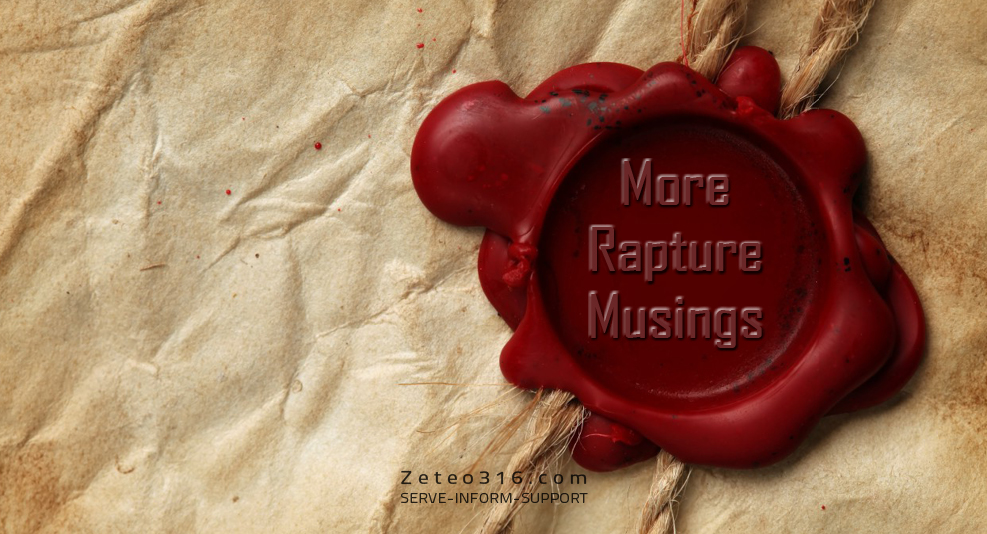
Here are some more rapture musings. I’m reacting to assorted online accusations aimed at pretribulationism. A constant theme I see is that pretribbers don’t diligently study their Bibles. Someone told them what to believe. Hence they’ve allowed themselves to be deceived. These critics often operate on the idea that one’s rapture timing view is vital to one’s preparation.
A popular ministry presenter has called the pretribulation rapture into question based on Matt 24. She notes that Jesus explicitly arrives after the tribulation is over. The gathering of the elect is assumed to be the posttribulational rapture of the church. There is only one future coming of Christ.
Pretribulationists are cited as saying that Jesus was only speaking to the Jews regarding the tribulation in Matt 24. She observes that they inconsistently reference other portions or parables as applying to the church, and she states that Jesus was either speaking to the church the whole time or He wasn’t.
Apparently pretribbers arrive at their views from pretrib pastors and books rather reading than plain-sense Scripture. This particular ministry wants to inform you of what your pastor allegedly never told you. There’s so much to say about all this – and much I’ve already said. Here are some more thoughts, for what they’re worth.
Let’s take the last assertion first.
At times people claim they’ve arrived at a rapture position from studying Scripture all by themselves. I’m intrigued when this applies to the newest rapture view. Especially when they also accuse pretribulationism of novelty. Or when this discovery only happens after two people popularized it last century. Chances are a book or ministry has contributed to everyone’s eschatology, not just Scripture. Just saying.
Next, there are many pretribulationists who deny the Olivet Discourse and parables have anything to do with the church. Robert L Thomas was one example. Others, like Arnold Fruchtenbaum, disagree. They posit that Jesus answered the disciples’ Jewish questions and added further information applicable to the church. Whatever the case, it can’t be an either/or church position given the obvious Jewish theme of the disciples’ questions.
Perhaps the largest contention is whether Matt 24:31 is the rapture of the church. The disciples were looking forward to Israel’s re-establishment (Acts 1:6-7). The premillennial gathering of Israel into the land is based on numerous OT promises.
As I’ve noted elsewhere, Van Kampen insisted that Matt 24:31 was the rapture rather than the gathering of Israel. He assigned a separate coming of Christ to gather Israel (Christ then goes back to heaven). Given the obvious Jewish themes and expectations, why arbitrarily make Matt 24:31 the rapture?
The “dual-phase” coming of Christ is a stick which many beat pretribulationists over the head with. Yet Van Kampen’s position is an ironical paradox where one view has multiple events (four in this case) yet claims they are a subset of One Coming. If this isn’t a problem for Van Kampen’s view, why don’t the ubiquitous charts depict these multiple events?.
This is why we see current denials from this group that Rev 19 portrays Christ’s Second Coming. If Jesus returns somewhere between the 6th & 7th seals, allegedly Matt 24:31 – then Rev 19 is another coming. So they either must deduce that Rev 19 is a recap of an earlier event, or that it’s symbolic, or lump this event along with all the others under the umbrella of One Parousia Coming.
One ought not assume that people who disagree have either been deceived or haven’t been diligent. Things aren’t always so “plain and simple.”
Now I saw heaven opened, and behold, a white horse. And He who sat on him was called Faithful and True, and in righteousness He judges and makes war. Rev 19:11
